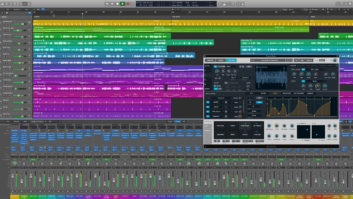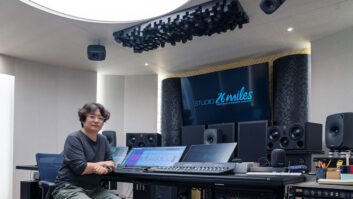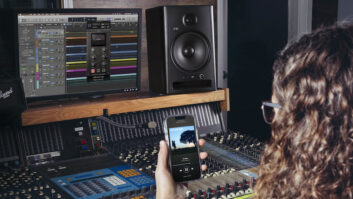The fact that audio pros are now able to perform almost all studio functions “in the box” has been hard on the balance sheets of traditional studios. Increasing access to tools is upending the traditional system and changing the idea of what a studio is. Far from being an endangered species, though, there are more studios now than ever before, and they’re found more commonly in homes, office spaces, garages, suites and the like. What’s more, thanks to DAWs, plug-ins and the increasing power and quality of hardware, many of these studios can undertake large-scale commercial projects.
Granted, there are still roadblocks to generating business in smaller studios, like noise issues, limited recording budgets for clients, and zoning ordinances that make flying under the radar difficult. But while technology takes away opportunities, it also opens up new ones.
One of the hot topics studio owners keep mentioning to me is podcasting, and the increasing number of podcasting clients they’re seeing. While it’s true that most podcasters aren’t going to lead lifestyles of the rich and famous, or even book long blocks of studio time, some podcasters are gaining serious traction and even attracting yearlong advertising contracts. For others, podcasting isn’t about making money per se, but promoting other, more profitable activities. And some are chasing the dream, like kids playing guitars in a garage back in the ’60s, in the hopes of being recognized.
The stats speak for themselves. As of April 2019, according to data from Edison Research and Nielsen published on Podcast Insights, there are over 750,000 podcast series and 30 million episodes. Over half of the U.S. population has listened to at least one podcast; 32 percent have listened to a podcast in the last month and 22 percent listen to podcasts weekly. Podcast listeners subscribe to an average of six shows and listen to an average of seven episodes a week. According to Nielsen, there’s been a 157 percent increase since 2014 in people who listen on smartphones. Podcasting audience numbers are on the rise.
What made big studios attractive was not just expertise, but hardware: comprehensive mic lockers, acoustical spaces, backlines, the ability to record multiple musicians simultaneously, and so on. Standard podcasting gear includes a laptop, USB mic (or maybe an inexpensive interface coupled with an SM58), generic headphones, and a program like Audacity. But as the podcasting world becomes more competitive, adding a professional veneer to the sound quality becomes more important. Many podcasters recognize that better editing/mixing software, and someone with the expertise to use it, is crucial if they want to succeed.
Today’s plug-ins can enhance voices dramatically, from better tone quality to maximizing dynamics. Restoration software (like iZotope RX7) can de-reverb sounds recorded on location, clean up Skype audio, remove hiss from podcasts recorded on a laptop, de-ess, banish mouth clicks and more. Many listeners speed up podcasts, so judiciously applied time-stretching can deliver a product that’s already sped up somewhat, but retains high audio quality. Virtual instruments can create sonic logos, while samplers add sound effects. Sound libraries, and even arranger keyboards, are a ready source of background music.
Of course, the business paradigm is different from yesteryear. Sessions are shorter—nobody’s booking hours and hours at a time. But it’s crucial that podcasters keep up a steady stream of content, which not only means repeat business for studios, but also that you can fit podcasting sessions in between longer sessions, like recording bands or doing audio-for-video gigs. And podcasters typically place little wear and tear on studios.
For engineers, the skill set is subtly different. A podcaster may work solo, but there might also be interviews and panel discussions. Figure-8 response mic patterns are often the best option for recording interviews, not the traditional condenser-mic-pointed-at-vocalist setup. Also, engineers need narration-oriented skills, like editing to correct phrasing, crossfading different segments, picking up pieces from one word and dropping them elsewhere when enunciation needs help, and video-style ripple editing (which more DAWs are adopting) to save editing time. Some DAW features, like Arranger tracks, can be highly useful features for editing podcasts, even if that wasn’t their original intention.
Detailed editing can turn into a rabbit hole, so how long the clock runs will depend on your client and the budget. Still, most podcasters who do podcasts on cooking or gardening are not likely to become DAW jockeys overnight. They need a studio and engineer.
The current podcast boom may be just another tech bubble, but some broadcasting veterans see it as the start of a new syndication model. Major labels, and network TV and movie studios have had to cede significant market share to streaming, and radio also faces digital disruption. If podcasting does indeed become the next big thing in broadcasting, software-based studios could be one of the major beneficiaries.
Craig Anderton’s new book series, The Musician’s Guide to Home Recording, is available from Hal Leonard in softcover, and online as a series of ebooks. Visit www.craiganderton.com for more info.







